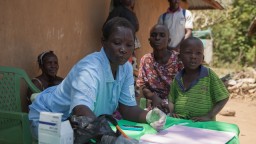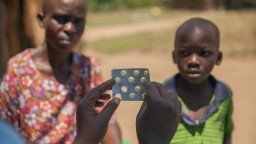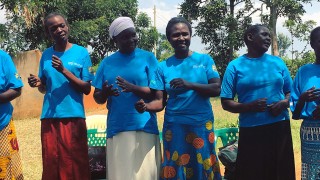Brilliant achievements by local Kenyans to fight malaria
We embark to Kenya this week with members of parliament, to visit a Malaria No More UK funded project: the Malaria Control and Elimination Partnership in Africa (MACEPA) Project in Siaya County, Kenya. We’re able to provide these grants thanks to donations from corporate businesses and from amazing individuals likes you, who are committed to the fight against malaria. The project is implemented by our partners PATH Kenya, to reduce the impact of malaria on communities in three sub-counties of Siaya County; Alego Usonga, Gem and Rarieda.
In Kenya, the whole population is at risk of malaria, with an estimated 3.5 million cases of malaria reported in 2016. The lake region where Siaya County is located still remains a high malaria burden area, the Kenya Malaria Indicator Survey (KMIS) 2014 places it at 53%.

With our partners, PATH and the Siaya County government, we identified three key interventions which could make a critical difference in improving malaria control in this region:
- Create malaria-free zones by mobilising local authorities and key players to support malaria control within communities
- Build and sustain high levels of coverage with both new and existing prevention and control tools
- Improve infrastructure to track and treat all suspected malaria cases
Through these key interventions, we hoped to help lead Kenya towards a significant reduction of malaria morbidity and mortality.
When setting up projects in communities it is essential that long term sustainability is the end goal. We are very pleased to announce that the PATH Kenya project has now reached its goal of self-sufficiency, it is now being led by the local community and fully integrated with the Country health authorities to provide effective treatment to save many lives from malaria. The project can continue sustainably because of the incredible work of those involved, below you can see a few of many achievements from this project.
Life changing achievements
In the first year of the project in 2015:
- 15 health facilities were identified and supported.
- 29 Community Units with 330 Community Health Volunteers serving about 130,000 people.
In 2016:
- 10 more health facilities were identified and supported.
- These were linked to 15 Community Units serving about 70,000 people.
In total therefore, the project supports 25 health facilities linked to 44 Community Units and serving a population of about 210,000 people.

The 496 Community Health Volunteers have been trained to implement malaria Community Case Management and to empower the communities to access quality, effective and prompt malaria prevention, diagnosis, and treatment.
- Community Health Volunteers screened 200,000 patients who had fever symptoms.
- 150,000 tested positive in 4 years.
- All subsequently offered a dose of Atemether Lumefantrine (medication used to treat malaria)
We are so pleased what this project has achieved so far to help fight malaria, your donations are so important for our aim of making malaria no more. Keep a look out on Twitter, Facebook and Instagram for updates of our trip to the project this week with the members of parliament!
